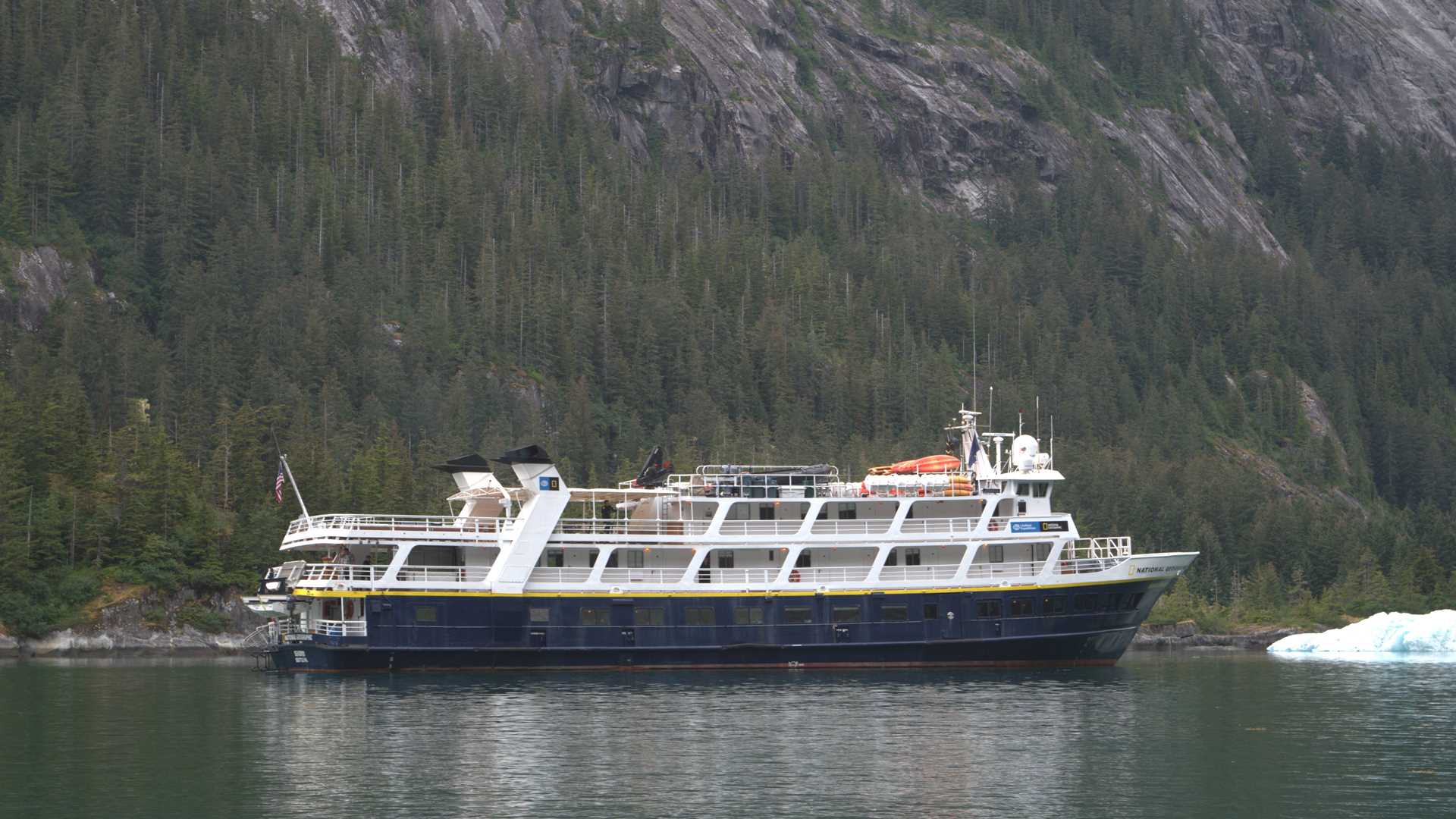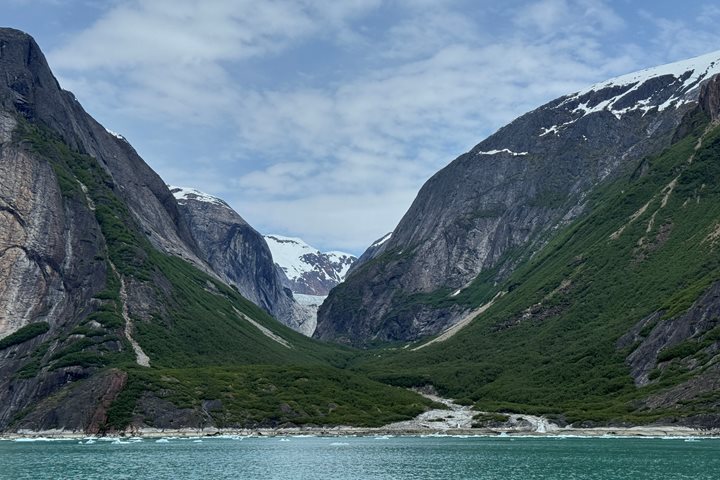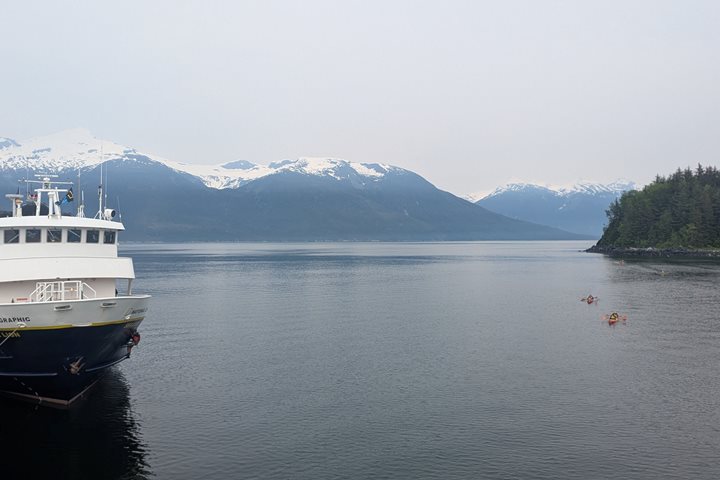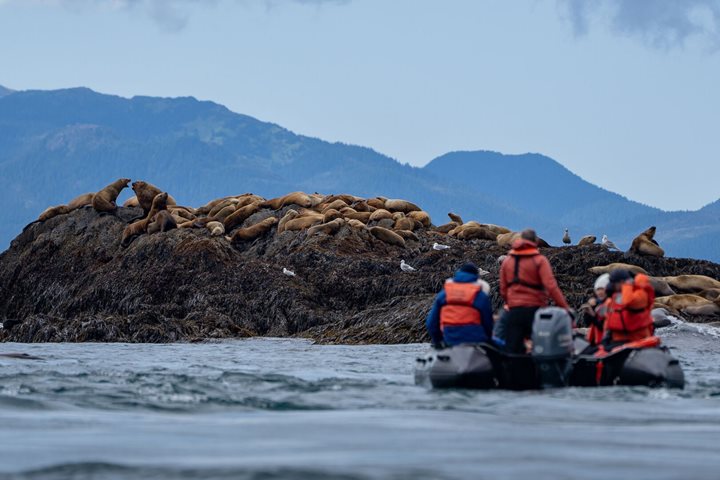Cruising throughout the night, we awoke to the sheer granite walls of Endicott Arm rising thousands of feet above our heads. Clouds filled the sky beneath the peaks of the surrounding mountains in the fjord, more appearing as we approached Dawes Glacier. We maneuvered the ship through an open path in the ice to the glacial face. Our guests were able to spend at least an hour at the face of the gorgeous glacier. We got as close as is legally possible. The sun was shining behind the glowing blue ice as we crossed back and forth. Pupping season fully underway, we were able to view mother harbor seals nursing their young on floating blocks of ice. Our guests were surprised by the arrival of hotel staff in Zodiacs. They were dressed as Vikings, and they gave us spiked hot cocoa.
After cruising back through the fjord during lunch, we found ourselves anchored in the bay outside of Fords Terror. The tightly carved fjord is named for the terror of surveyor Harry L. Ford. This was a new exploration for even our longest tenured staff. Unless happening at slack tide, the tidal shifts are simply too dangerous to traverse. On the other side of the rapids at the entry, our drivers nosed into spectacular waterfalls. It was an intense experience that is hard to describe. No one knew what awaited us around each turn, but it was always beautiful and tightly hugged by the sheer granite.
It was a lovely afternoon cruising and scanning for wildlife as guests enjoyed cocktails and talked joyfully about their day at the foot of a stunning glacier.
Photo caption and photographer: National Geographic Sea Bird anchored at the opening of Fords Terror. Photo by Luke Manson







